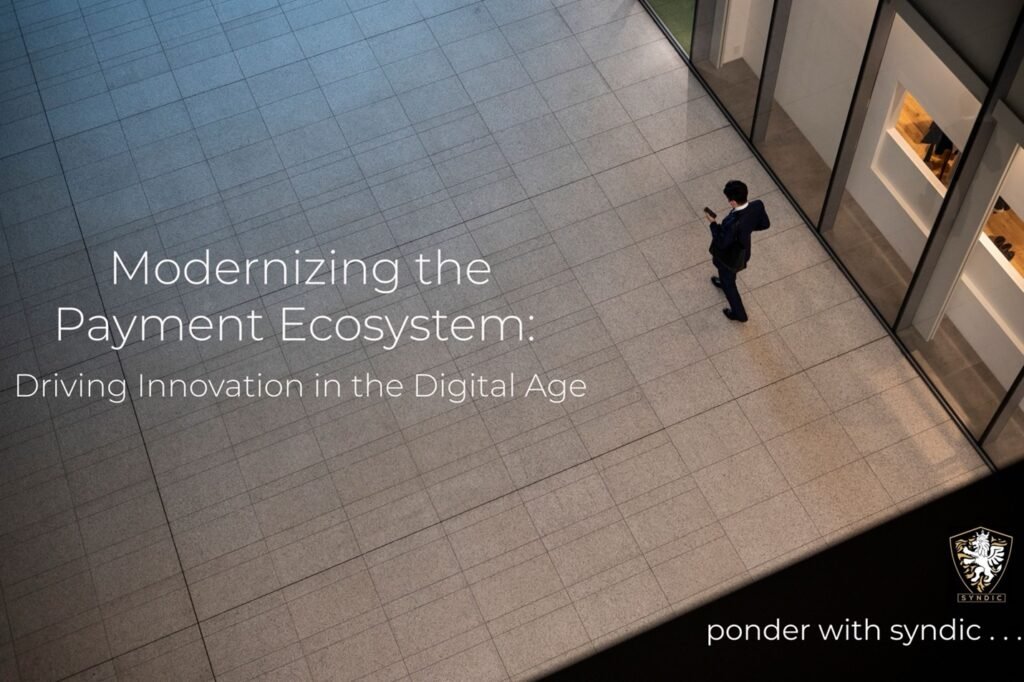
In an era of rapid technological advancement, the payment ecosystem is undergoing a significant transformation. How we exchange money has evolved dramatically, shifting from cash-based transactions to digital payments that are faster, more secure, and increasingly integrated into our daily lives. This modernization of the payment ecosystem is not just about replacing legacy systems; it’s about creating a seamless, innovative, and inclusive financial environment. Let’s explore the key trends, challenges, and benefits of modernizing the payment ecosystem.
One of the most profound changes in the payment ecosystem is the shift from cash to digital payments. Mobile wallets, contactless cards, and cryptocurrencies are becoming the norm, offering consumers more flexibility and convenience. Innovations such as Apple Pay, Google Wallet, and digital banking apps are streamlining the process of making payments, whether in-store or online. This trend is driven by consumers’ desire for faster, more secure, and accessible ways to transact, particularly in the post-pandemic world where contactless interactions have become a necessity.
Fintech companies are playing a critical role in the modernization of the payment ecosystem. Startups and tech-driven financial institutions are pushing traditional banks and payment processors to innovate. They are leveraging technologies such as blockchain, artificial intelligence (AI), and machine learning to improve transaction speed, reduce fraud, and offer more personalized payment solutions.
For instance, blockchain technology is enabling secure, transparent, and decentralized transactions, while AI is helping to detect fraudulent activities in real-time. Additionally, the integration of AI into payment systems allows for the automation of customer service through chatbots, offering consumers immediate assistance and reducing the operational costs for businesses.
The rise of e-commerce and the gig economy has highlighted the importance of efficient cross-border payments. Traditional methods of sending money across borders are often slow, expensive, and riddled with intermediaries. Modern payment platforms, such as PayPal, Stripe, and TransferWise, are simplifying international transactions, offering faster and more cost-effective solutions.
Moreover, the advent of digital currencies, like Bitcoin and Ethereum, has introduced new possibilities for cross-border payments, reducing reliance on traditional financial systems and enabling individuals in underserved regions to participate in the global marketplace.
As payment systems evolve, so do the threats they face. Cybersecurity has become a major concern for both consumers and businesses as cyberattacks and data breaches become more sophisticated. Modern payment systems must prioritize security to protect sensitive financial information. This includes implementing encryption, multi-factor authentication, and tokenization to safeguard data.
Additionally, regulatory compliance is critical in the payment ecosystem. Payment service providers must adhere to various laws and regulations such as the General Data Protection Regulation (GDPR) in Europe or the Payment Card Industry Data Security Standard (PCI DSS) to ensure that transactions are secure and that customer data is handled responsibly.
One of the most promising aspects of modernizing the payment ecosystem is its potential to drive financial inclusion. In many parts of the world, people still lack access to traditional banking services. Digital payment solutions are bridging this gap, offering financial services to underserved populations through mobile banking, peer-to-peer (P2P) payment systems, and even cryptocurrencies.
Financial inclusion initiatives often focus on providing services to the unbanked and underbanked populations. For example, mobile money services such as M-Pesa in Kenya have revolutionized access to financial services, enabling millions of people to send, receive, and save money using just a mobile phone.
The future of payments lies in creating an “invisible” payment experience. This means that payments will become so integrated into the consumer journey that they will be virtually imperceptible. Think of Amazon Go stores, where customers can walk in, pick up items, and walk out without stopping at a checkout counter—the payment is processed automatically via sensors and AI.
Voice-activated payments, biometric authentication, and wearable technology are also shaping the future of payments, making them more seamless and intuitive. In this future, the payment process will become an invisible part of everyday life, freeing consumers from the friction of traditional transactions.
Conclusion
Modernizing the payment ecosystem is an ongoing journey, fueled by innovation, competition, and the changing needs of consumers. As digital payments continue to grow, the focus will be on creating systems that are not only faster and more secure but also more inclusive and accessible. By embracing new technologies, enhancing security, and expanding financial services to underserved populations, we can create a payment ecosystem that is truly fit for the digital age.
Whether you’re a business looking to streamline your payment processes or a consumer enjoying the convenience of mobile payments, the modernization of the payment ecosystem promises to deliver more flexibility, security, and opportunity for all.
Syndic Corp is a leading global investment holding company committed to driving sustainable growth and value creation. With a focus on long-term strategic investments, we harness expertise and innovation to empower tomorrow’s economy.
Copyright 2024 © All Right Reserved Syndic Corp.